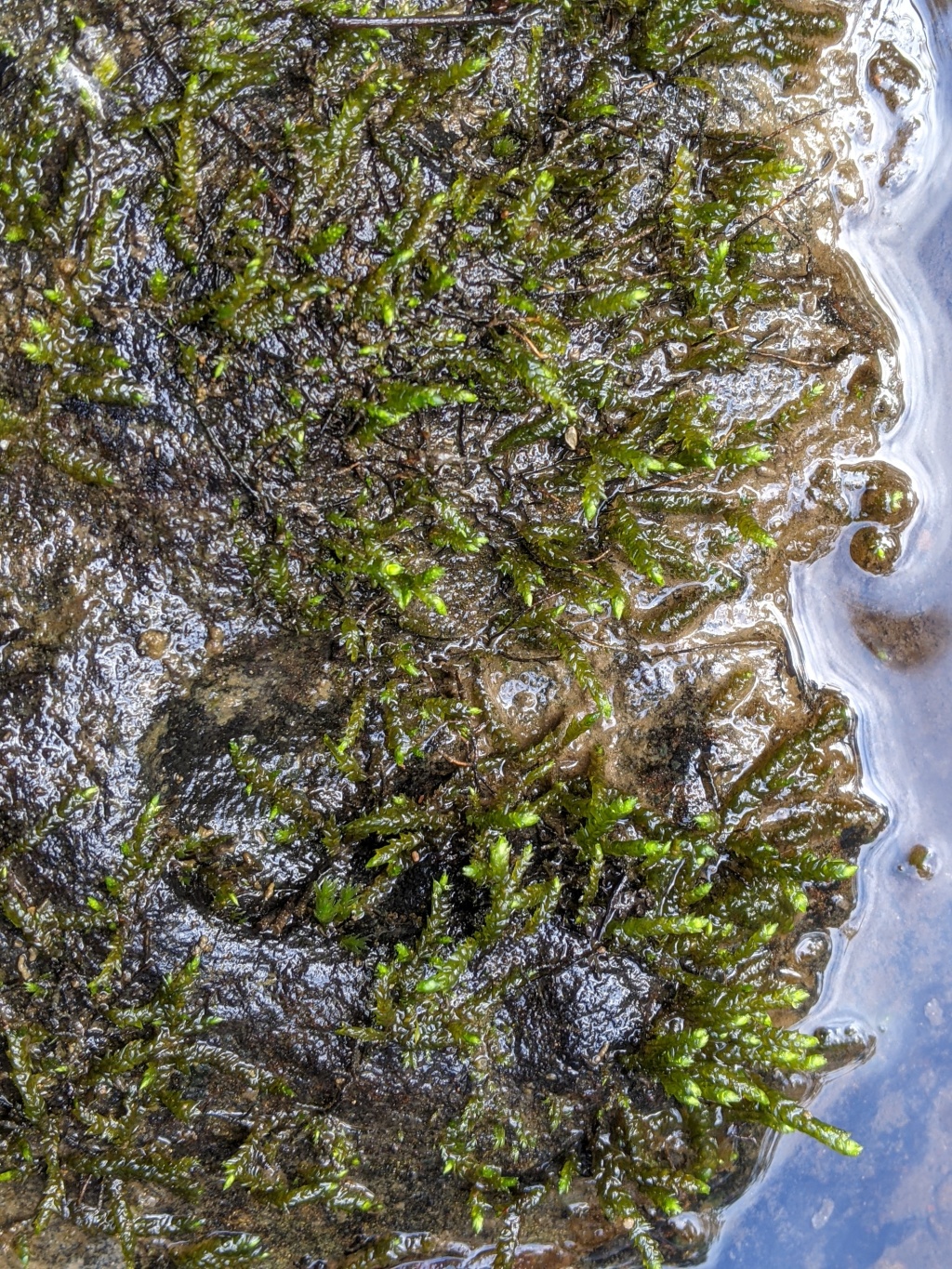Hedenaesia
Autoicous. Asexual propagules absent. Mats on soil, rocks, logs and tree bases, often aquatic. Stem irregularly and sparingly or pinnately to bipinnately branched, with fascicles of rhizoids on ventral surface; paraphyllia absent; central strand absent or present. Leaves on stems and branches not differentiated or differentiated only by size, orbicular or broadly ovate to ovate-lanceolate, erect to erect-spreading when moist, scarcely altered or twisted and shrunken when dry, arranged around the stem and facing all directions, homomallous or branch leaves occasionally complanate, not plicate; apex obtuse, acute or acuminate; costa single or occasionally forked, extending 0.4–0.8 of leaf length, with an indistinct spine or without a spine apically; margin serrulate to serrate almost throughout, plane; laminal cells linear, shorter and broader toward base and shorter and more rhombic near apex, smooth; alar cells poorly differentiated. Seta rough. Capsule inclined to horizontal, curved, obovoid, obloid or short-cylindric, with or without an annulus. Calyptra cucullate, smooth, glabrous. Operculum rostrate. Peristome double; endostome segments nearly as heigh as exostome, with a high basal membrane; cilia present.
Two species from eastern Australia and New Zealand and one species on Macquarie Island and Norfolk Island; two species in Victoria.
Hedenaesia was erected to accommodate two species with mammillose setae which were shown in a phylogeny of chloroplast and nuclear DNA sequences to be misplaced in genera that otherwise comprised species with smooth setae (Ignatov & Huttunen 2002; Huttunen & Ignatov 2010). In the last treatment of Australian Brachytheciaceae, Hedenaesia austrina (Hook.f. & Wilson) Huttunen & Ignatov was included in Platyhypnidium and H. muriculata (Hook.f. & Wilson) Huttunen & Ignatov was included in Rhynchostegium (Hedenäs 2012a, b). Both these two species were resolved as each other’s closest relative and not closely related to either Platyhypnidium or Rhynchostegium (Huttunen & Ignatov 2010).
 Spinning
SpinningHedenäs, L. (2012a). Australian Mosses Online. 65. Brachytheciaceae: Platyhypnidium.
Hedenäs, L. (2012b). Australian Mosses Online. 65. Brachytheciaceae: Rhynchostegium.
Huttunen, S.; Ignatov, M.S. (2010). Evolution and taxonomy of aquatic species in the genus Rhynchostegium (Brachytheciaceae, Bryophyta). Taxon 59: 791–808.
Ignatov, M.S.; Huttunen, S. (2002). Brachytheciaceae (Bryophyta) – a family of sibling genera. Arctoa 11: 245–296.
